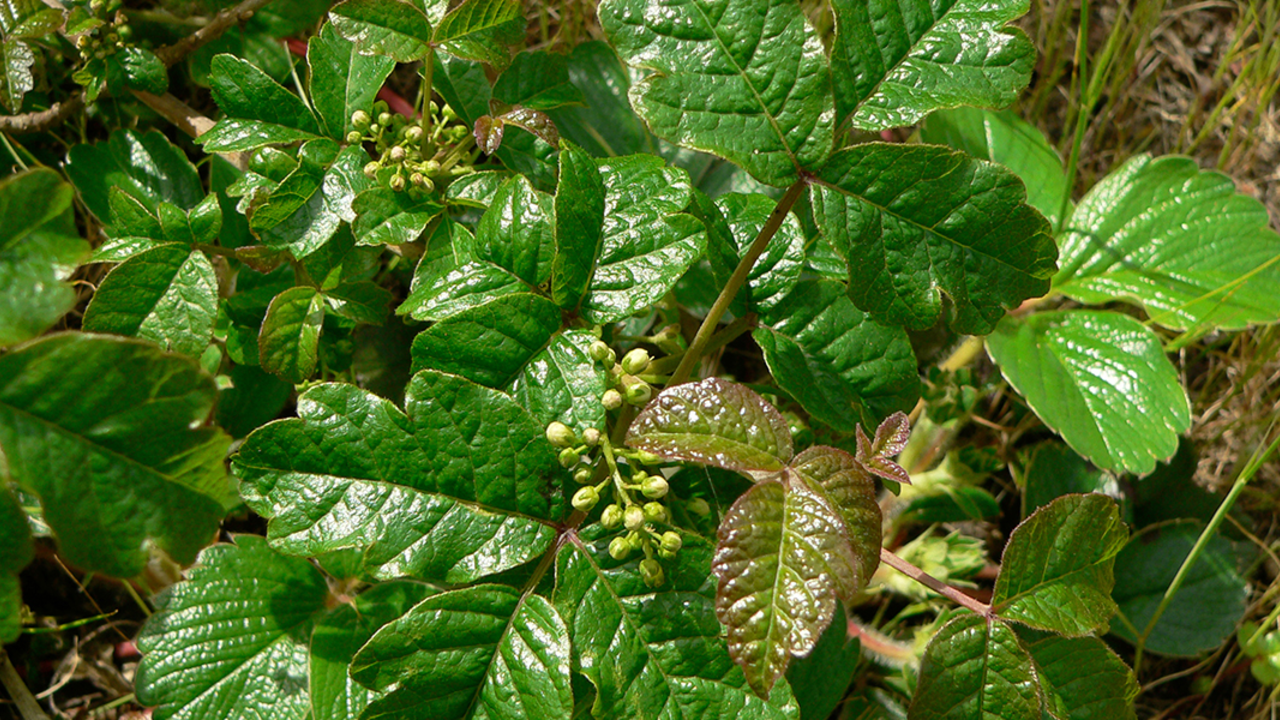The Four-Season Field Guide to Poison Oak

Eric Poelzl/Parks Conservancy
By Sarai Crooms
Community Programs Intern, Park Stewardship
“Leaves of three, let it be. If it’s hairy, it’s a berry. If it’s shiny, watch your hiney.” That famous rhyme can help you pick out poison oak—for part of the year. But, because Toxicodendron diversilobum is deciduous, what about the other seasons?
To identify poison oak all year-round, just remember what season you’re in—spring, summer, fall or winter—and these helpful tips:
Spring: During the spring months, poison oak can be very green with varying amounts of red on the leaves, or no red on the leaves at all. It has erect stems and leaves in threes; the leaves have a shiny and smooth look to them.
Summer: During the summer the buds of the poison oak have bloomed and are greenish and white. The plant is still pretty green; only at the end of the summer do the leaves start turning reddish.
Fall: Around this time the leaves are no longer bright green; they now take on the famous reddish look that a lot of people look for. Just remember that as the calendar rolls toward winter, that’s when the leaves start dropping off.
Winter: It can be very difficult to identify poison oak during winter time because it’s dormant. During this stage, it loses its leaves and looks like bare, erect sticks coming from the ground. But just because the leaves are no longer present, that does not mean that the rash-inducing oils are absent. Be wary of the branches as well, and look for cinnamon-colored branches when you’re in an area likely to have poison oak.
So always be aware of your surroundings and keep an eye out for the various stages of poison oak!